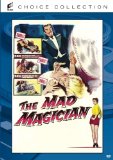| Reviews & Columns |
|
Reviews DVD TV on DVD Blu-ray 4K UHD International DVDs In Theaters Reviews by Studio Video Games Features Collector Series DVDs Easter Egg Database Interviews DVD Talk Radio Feature Articles Columns Anime Talk DVD Savant Horror DVDs The M.O.D. Squad Art House HD Talk Silent DVD
|
DVD Talk Forum |
|
|
| Resources |
|
DVD Price Search Customer Service #'s RCE Info Links |
|
Columns
|
|
|
Mad Magician (Sony Choice Collection), The
Enjoyable if two-dimensional three-dimensional horror retread. Sony's Choice Collection vault of hard-to-find cult and library titles has released (for the first time on home video) The Mad Magician, the 1954 3D thriller from Columbia starring Vincent Price, Mary Murphy, Eva Gabor, Patrick O'Neal, John Emery, Donald Randolph, Lenita Lane, and Jay Novello. A fairly obvious lift (including the same star, producer, scriptwriter, and cinematographer) from the previous year's 3D smasheroo, House of Wax, The Mad Magician doesn't come close to approximating that classic's gruesome, comic book tone...but it is fairly amusing in its own right, largely thanks to another deliciously hambone turn from the master, Vincent Price. No extras for this superlative-looking flat (sorry, no 3D), anamorphically enhanced black & white transfer.
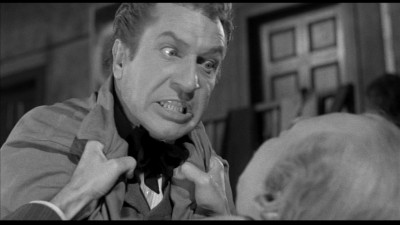
Stage magic effects designer Don Gallico (Vincent Price) is ready to step out from behind his inventor's workbench and become magician "Gallico the Great." Armed with state-of-the-art facial masks that allow him to execute impressions of other famous magicians, along with a killer new illusion―"The Lady and the Buzzsaw"―Gallico is ready to take Broadway by storm. Wowing the out-of-town tryout audience with his impersonation of "The Great Rinaldi" (John Emery), Gallico prepares to slice his pretty assistant, Karen Lee (Mary Murphy) in half, when the curtain suddenly comes down. Gallico's employer, Ross Ormond (Donald Randolph), letting Gallico get this far with his plans in order to humiliate him, presents an injunction against the act: as his employer, Ormond owns everything Gallico creates―on or off the clock. Back in New York, at their company, Illusions, Inc., Ormond further debases Gallico by taunting him about "trollop" Claire (Eva Gabor), Gallico's ex-wife whom Ormond seduced and married some years ago. Pushed too far, Gallico goes insane and buzzsaws off Ormond's head, setting into motion a series of elaborate impersonations and cover-up murders that baffle the police, including Karen's fiancé, New York Police Detective Lieutenant Alan Bruce (Patrick O'Neal).
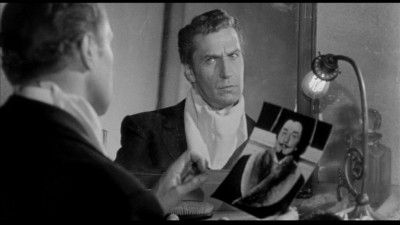
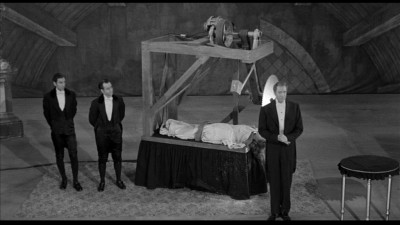
The Mad Magician, released in May of 1954, was one of the later entries in the "golden age" of stereoscopic movies, coming during the second "boom-bust" phase of the era's relatively short three-year craze. Although examples of stereoscopic test footage and shorts had been around since the first part of the 20th century, the advancement of the red/green anaglyph format and particularly Land's Polaroid polarizing filters (used in conjunction with two synched prints), meant that by 1952, three dimensional movie production and projection, despite lingering technical limitations, was a viable "attention getter" for studios desperate to bring back moviegoers who had abandoned Hollywood for their television sets. 1952's indie smash, Bwana Devil, started the 3D rush, a flurry of activity that ebbed and flowed particularly after Fox introduced a rival "three dimensional" (as it was originally advertised) process: CinemaScope®. By the time The Mad Magician appeared in the spring of 1954, most studios and theatre owners (and moviegoers, too), had already thrown their lot in with the various competing widescreen filming and projection processes. The limitations of stereoscopic moviemaking at the time―registration issues with synching the prints (and the resulting eyestrain for the viewers), the cost of printing up two prints per engagement, and the problems associated with damage to one print, run-time limitations owing to not being able to switch reels―proved more troublesome than the worth of the admittedly eye-popping visual punch of the 3D effects, so as with most crazes, it died out...only to be reborn several more times over the decades (until today, where it appears at last to be a permanent fixture of Hollywood moviemaking).
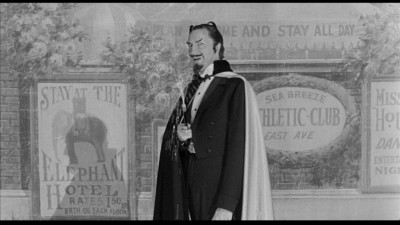
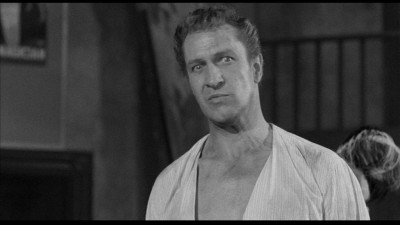
As for The Mad Magician, it's definitely House of Wax's poor relation, in both a literal and figurative manner, since it tries, with many of the same HOW crew, to ape HOW's success, only with a noticeably smaller budget...and fewer ideas. HOW remained an audience favorite for decades after its initial 3D theatrical release because it succeeded first as a horror-tinged thriller; kids like me in the 70s who watched it obsessively every time it showed up on TV may not have known it was shot expressly for 3D effect (although we guessed something was weird about it, owing to all that stuff getting thrown at the camera), but we knew it was a solid, scary horror outing. Simply put: it worked without the 3D effects. However, The Mad Magician, entertaining thought it may be at times, doesn't work so hot as a thriller, and I'm not so sure the 3D effects would "save" it (to be fair, though, I've never seen it projected in 3D...). A good example is the sequence involving Price losing his boss's decapitated head in a satchel mistakenly picked up by Murphy, a suitably gruesome (and inherently funny) plot device that should have delivered some solid suspense thrills, but which is utterly defeated here when the resolution isn't even shown (we hear through desultory exposition how the matter was resolved without incident...whoopee). The Mad Magician is like that in most of its suspense elements: the set-ups are intriguing (Price donning masks to impersonate his foes, the arrival of the snoopy landlords Lenita Lane and Jay Novello), but the execution is distressingly familiar (if not downright weak, at times).
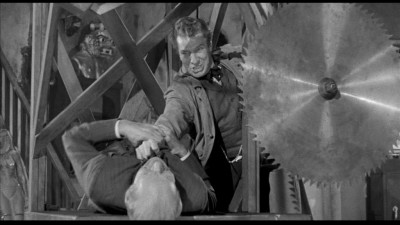
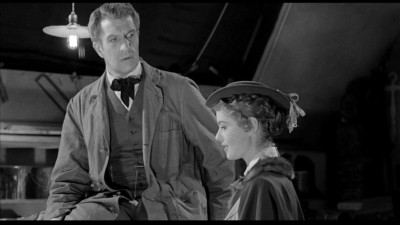
And of course, these weaknesses in Crane Wilbur's script (House of Wax, I Was a Communist for the F.B.I., Solomon and Sheba, He Walked by Night) and John Brahm's direction (The Lodger, Hangover Square, The Miracle of Our Lady of Fatima, Hot Rods to Hell), are only put into starker relief without the distraction of the 3D effects. Watching a movie like The Mad Magician without its intended 3D context is really no different than watching a pan-and-scanned CinemaScope® title: it's not the way it was really meant to be seen (...even if many of these 3D titles were often released "flat," as well). So the 2D 3D effects can only be enjoyed in a knowing historical context; they're fairly meaningless on their own here when presented "flat." You can tell that cinematographer Bert Glennon and director Brahm are careful at times to stagger the foregrounds and backgrounds to give a little 3D visual interest in scenes that don't involve an overt effect, but when an "eye popper" does come up, it's fifty-fifty whether it will work (Lyle Talbot's rubber arm shoving a program in our face is socko) or not (the yo-yo man, aping the amazing paddle ball barker in HOW, is flat and dull...and over in ten seconds). Even the Victorian gaslight settings are disappointingly ho-hum (the choice of b&w isn't to blame; I suspect the budget and Columbia's usual harried house style: set it up fast and shoot it).
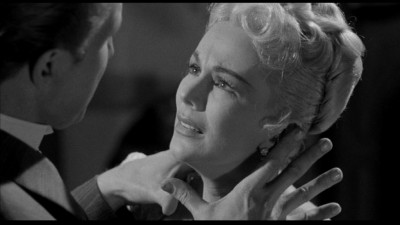
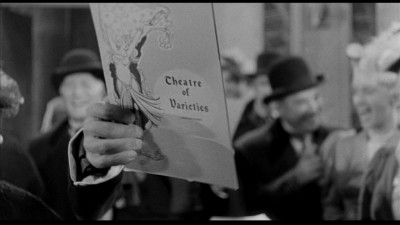
That all may sound unnecessarily negative, but it shouldn't, because despite its obvious limitations and compromises, The Mad Magician is fun in a slight, goofy sort of way...particularly anytime Vincent Price is chewing up the scenery. Eva Gabor plays the hot, spoiled bitch to a "T" (a very pretty neck to strangle, should she betray you), but the appealing Murphy is completely wasted in a non-part (another element from HOW and of course The Phantom of the Opera―the strange romantic relationship between the beauty and the obsessive madman―that The Mad Magician fumbles). Pros Emery, Lane, and Novello seem to think that The Mad Magician should be approached as a spoof, so they're appropriately (and most welcomely) tongue-in-cheek in their turns, but it's Price, as always, who holds The Mad Magician together. Wonderfully heady and yeasty even when he's playing a scene soft and tortured, he's highly amusing here anytime he goes into overdrive (his, "Go on, laugh! Laugh at me! Laugh!" bit with Randolph is a classic). Price, perhaps more than any other actor I can think of, could simultaneously amuse you and impress you with a deliberately over-the-top performance, while miraculously taking the pejorative sting out of "ham." No wonder he's the icon he is today: there's no other real reason a movie like The Mad Magician would be of interest today, without him.
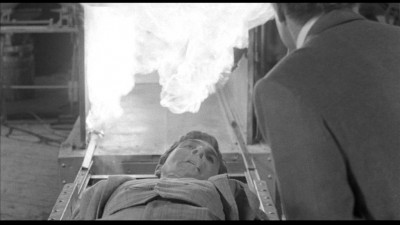
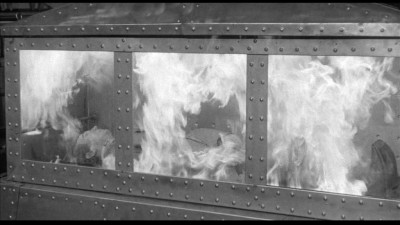
The DVD:
The Video:
Like some other recent Sony Choice Collection titles I've reviewed, I was most impressed by The Mad Magician's velvety, almost pristine transfer. Anamorphically enhanced at 1.75:1, the black and white image is razor-sharp, with little grain, few if any imperfections, and blacks that hold. Terrific.
The Audio:
The Dolby Digital English mono audio track is re-recorded at a sufficient level, with no distracting fluctuations. Clean dialogue. No closed-captions or subtitles.
The Extras:
No extras for The Mad Magician.
Final Thoughts:
Sure Vincent Price is the whole show...but he's worth it. The Mad Magician of course loses a lot of its inherent interest if you're watching it "flat" without its intended 3D effects. And no, it's not really a laudable successor to its host movie, 1953's House of Wax. But it does have its low-budget charms, particularly the cast's playful attitude. I'm recommending The Mad Magician.
Paul Mavis is an internationally published film and television historian, a member of the Online Film Critics Society, and the author of The Espionage Filmography.


|
| Popular Reviews |
| Sponsored Links |
|
|
| Sponsored Links |
|
|
| Release List | Reviews | Shop | Newsletter | Forum | DVD Giveaways | Blu-Ray | Advertise |
|
Copyright 2024 DVDTalk.com All Rights Reserved. Legal Info, Privacy Policy, Terms of Use,
Manage Preferences,
Your Privacy Choices | |||||||









